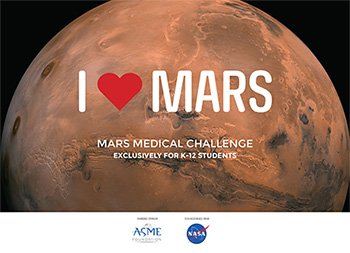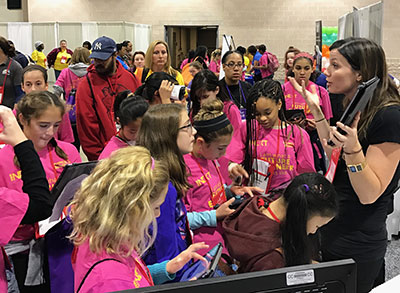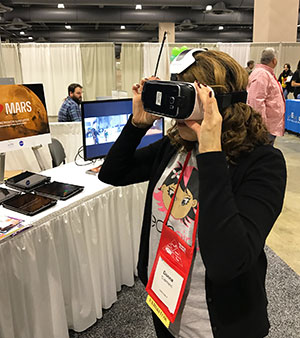Future Engineers, the ASME Foundation and NASA Launch the “Mars Medical” Design Challenge
Future Engineers, the ASME Foundation and NASA Launch the “Mars Medical” Design Challenge
Nov. 4, 2016

Mars is the next frontier for the U.S. space program, and astronauts accepting assignments to explore Mars will be signing-up for a three-year mission. A lot can happen in three years: Remember Matt Damon in The Martian? Too bad he didn’t have a 3D printer handy.
Last week, the Future Engineers program, which was developed in collaboration with the ASME Foundation and NASA, launched its fifth collaborative competition: the “Mars Medical” Design Challenge. The new competition asks students from the K-12 community to create a digital 3D model of a medical or dental object that could be used by astronauts to maintain their physical health on a three-year mission to the red planet. The focus is on space medical needs, which may include diagnostic, preventative, first aid, emergency, surgical and/or dental purposes.

Aside from the theoretical, this challenge has real-world applications to NASA’s continued activity at the International Space Station. “Research conducted by astronauts aboard the International Space Station educates our nation and world about the health challenges that astronauts face on prolonged missions,” said Deanne Bell, CEO and founder, Future Engineers. “As NASA continues to investigate how the human body adjusts to weightlessness, radiation and stress that occur on long duration spaceflight, Future Engineers is eager to engage students with a real-world space exploration challenge that focuses on health-related hardware and how a 3D printer can assist astronauts facing a medical scenario during a Mars mission.”
Future Engineer Challenges are free to enter and open to K-12 students within the United States. The online platform provides education resources including links to free design software and a suite of brainstorming categories to get students started with creating their designs. Additionally, the site provides tools teachers may use to assist with classroom registration and submission.

One winner in both the junior (ages 5-12) and teen (ages 12-19) categories of the “Mars Medical” Design challenge will each receive a trip to Houston, Texas, and a tour of NASA Johnson Space Flight Center, where they will learn about space medicine, human space exploration and Mars. In addition, MakerBot will also donate eight Replicator Mini+ 3D printers to the schools, libraries, or education organizations of the top four finalists on behalf of their accomplishment.
Submissions from U.S. K-12 students are currently being accepted through Jan. 25, 2017 at www.FutureEngineers.org/MarsMedical. Previous Future Engineers Challenges have called upon students to design 3D models of space tools, containers and objects needed for space exploration.
For more information on the Future Engineers 3D Space Challenges, visit www.FutureEngineers.org. Follow Future Engineers on Twitter @k12futuree (#MarsMedical) or like them on Facebook at www.facebook.com/K12futureengineers/. Contact Patti Jo Snyder, Programs and Philanthropy, by e-mail at snyderp@asme.org for information on ASME’s K-12 education portfolio.
Patti Jo Snyder, Programs and Philanthropy




